Chess Strategy 1.e4 c5 Extra How to Beat Intermediate Chess Players Tim Sawyer Chess Strategy 1.e4 c5 Extra: How to Beat Intermediate Chess Players Copyright 2022 by Sawyer Publications All rights reserved. No part of this book may be reproduced in any form without permission in writing from the author. Disclaimer and FTC Notice No part of this publication may be reproduced or transmitted in any form or by any means, mechanical or electronic, including photocopying or recording, or by any information storage and retrieval system, or transmitted by email without permission in writing from the publisher. While all attempts have been made to verify the information provided in this publication, neither the author nor the publisher assumes any responsibility for errors, omissions, or contrary interpretations of the subject matter herein. This book is for entertainment purposes only. The views expressed are those of the author alone, and should not be taken as expert instruction or commands.
The reader is responsible for his or her own actions. Adherence to all applicable laws and regulations, including international, federal, state, and local governing professional licensing, business practices, advertising, and all other aspects of doing business in the US, Canada, or any other jurisdiction is the sole responsibility of the purchaser or reader. Neither the author nor the publisher assumes any responsibility or liability whatsoever on the behalf of the purchaser or reader of these materials. Any perceived slight of any individual or organization is purely unintentional. Cover design by: https://www.fiverr.com/pro_ebookcovers Table of Contents Introduction This chess book gives Sicilian Defence games 1.e4 c5 that I played after I finished writing my three previous books in this series that cover Sicilian. This book has 50 games with 100 diagrams.
This book is purely for entertainment value. I illustrate chess strategy from these ten-minute games vs random or Advanced players as Guests on chess.com. I play the Black pieces for most of the games in this book. In the few games where I do have White, I intend to play the Open Sicilian with 1.e4 c5 2.Nf3 and 3.d4 cxd4 4.Nxd4. Intermediate players rated under 1800 tend to play the Anti-Sicilian variations that avoid the Open Sicilian. This includes 2.c3, 2.d4, 2.Nc3, 2.Bc4, and the popular 2.Nf3 without an immediate 3.d4.
Opening theory and endgame knowledge help your play, but tactics win most games. A chess player friend of mine told me that his intermediate opponents never play the main lines of popular openings. He said that his knowledge of opening theory did not help. That gave me an idea for this series of books on How to Beat Intermediate Chess Players using popular openings. Intermediate players typically range from 1300 to 1799. Yes, I can beat most intermediate players most of the time with any opening.
Where am I going to find such players? For ten months, I played 2650 unrated 10-minute games (formerly blitz, now called rapid). I won 2500 games. I drew 38, and I lost 112 games. Because I attack immediately in the opening, I won 300 short games in less than 10 moves. I chose to play 10-minute rapid games vs random guests on chess.com. That way Id never be under time pressure.
Five to seven seconds per move is an easy pace for me. I was a USCF Postal Chess Master. I won an International Correspondence Chess Federation Master Class event. I played Board 4 for the USA in the 10th Correspondence Olympiade 1982-84. I was an Expert in USCF tournament play. I played blitz chess in the Internet Chess Club for 22 years with standard, blitz, and bullet ratings all over 2200.
My peak blitz rating was 2492 back in 1998. Now its 2050. I use strategy for my comments to explain whats going on. I follow any of these steps. 1. 2. 2.
Imagine how to improve it. 3. Plan how to get there. My opening philosophy against intermediate players is to challenge them in the center quickly with as many pawns and pieces as possible. I prefer a classical style for this. My strategy is to win games by just playing good moves.
Good moves will never give you a bad position. Unless you are in a position where there is only one good move, you dont have to be perfect. Just play a good move. Youll do fine. If your pieces are safe and active, its a good move! To be a complete player, you must study complete games. I can win in the opening, the middlegame or the endgame.
Pattern recognition is key to tactical skill. As you improve, you will notice and remember patterns of pawn structure or of piece arrangements that lead to tactics. Some lead to checkmates. Others lead to combinations that win material. Intermediate chess players lose because they fail to keep their pieces safe, fail to activate all their pieces, fail to spot checkmates, and fail to see combinations that win material. I assume that you can read algebraic chess notation.
The diagrams have White at the bottom of the board. Thank you for reading my books. I hope you enjoy this one!
Chapter 1 1.e4 c5
Game 1 [2.Qf3 Nc6 3.Bc4 e6]
Guest Sawyer, Chess.com, 14.03.2022
1.e4 c5 2.Qf3 Nc6 3.Bc4 My opponent dreams of an easy mate on f7. 3...e6 4.d3 Nf6 5.Bg5 Be7 6.Qg3 d5
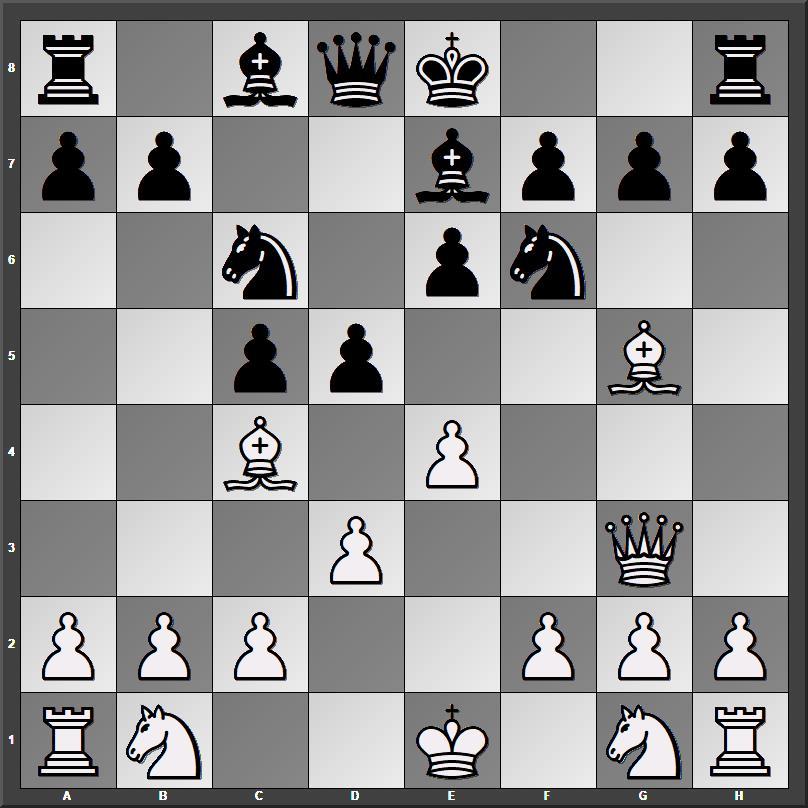
7.Bb5 If 7.Bb3 c4 8.dxc4 Nxe4 9.Bxe7 Qa5+ Black wins a queen. 7...Qa5+ 8.c3 Or 8.Nc3 d4 and Black wins material. 8...Qxb5 9.Bc1 dxe4 10.Qxg7 Rg8 11.Qh6 exd3 12.Nd2 Bd7 13.c4 Qa5 14.Ngf3 Nd4 15.00 Nxf3+ 16.Nxf3 Bc6 [Rather than defend the threat against f3, White attacks my queen.] 17.Bd2 Bxf3 [My opponent can have the queen.]
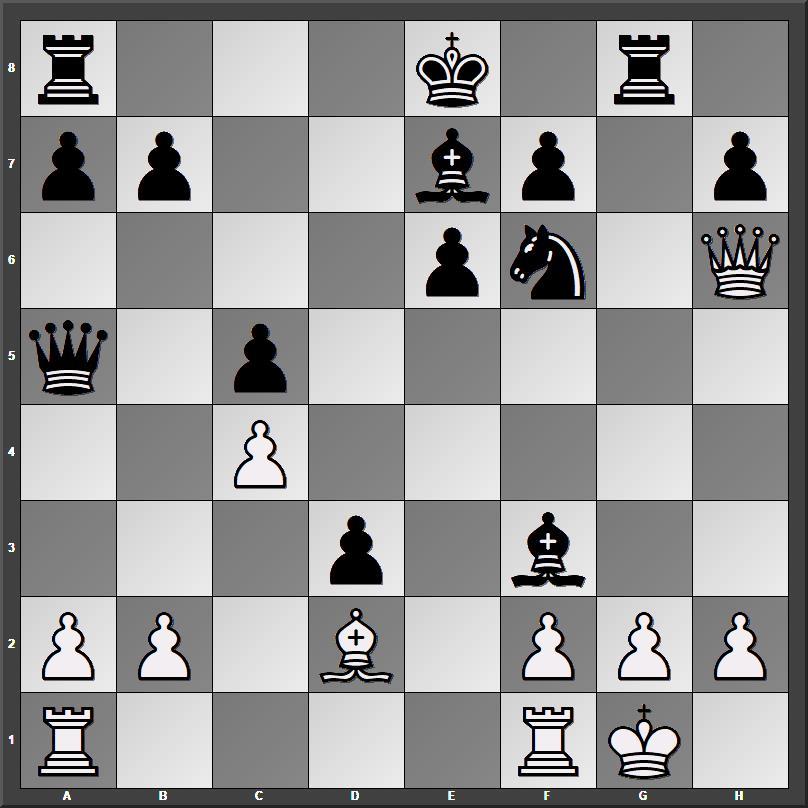
18.Bxa5 Rxg2+ 19.Kh1 Rg3# 01 White is checkmated
Game 2 [2.Qh5 e6 3.Bc4 Nf6]
Guest Sawyer, Chess.com, 03.03.2022
1.e4 c5 2.Qh5 e6 White attacks the c5 pawn with the queen.
Black defends c5 with the bishop by playing a natural pawn move. 3.Bc4 Nf6 4.Qg5 Nxe4 My opponent loses the e-pawn and avoids a queen swap. 5.Qe3 d5 6.Bd3 Nf6 7.c4 d4 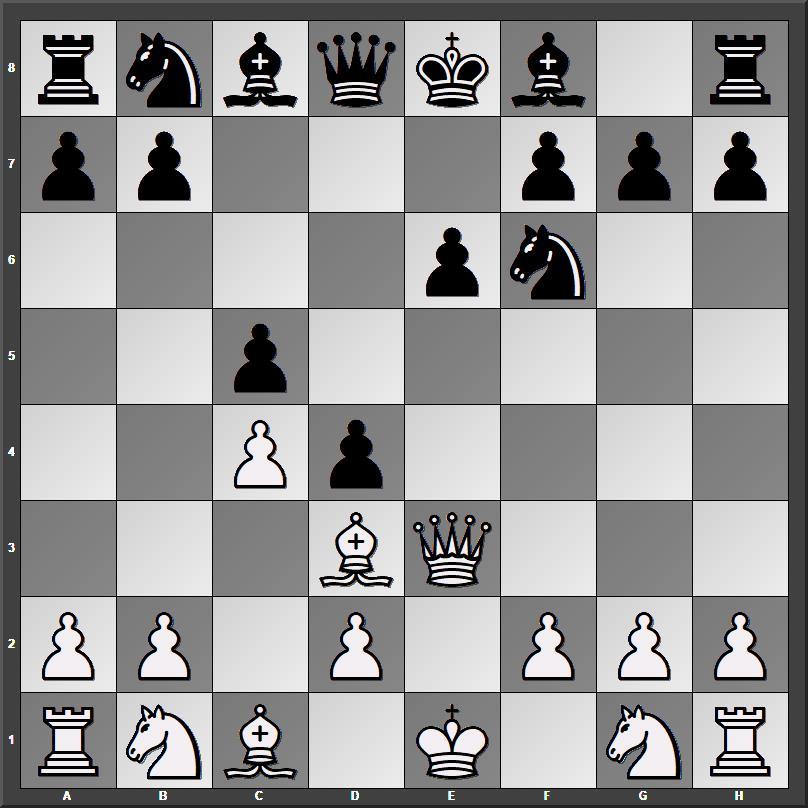 I plan a big pawn center. White's d2 pawn never moves. 8.Qe5 Nc6 9.Qe2 Be7 10.Nf3 00 11.Ne5 [White moves a knight a second time to trade it away.] 11...Nxe5 12.Qxe5 Bd6 13.Qe2 e5 14.Be4 Nxe4 15.Qxe4 Qe7 16.00 f5 17.Qe1 e4 [My pawns dominate the center.] 18.Na3 Be6 19.Qe2 Qh4 20.h3 Rae8 [Black is fully developed and ready to assault the kingside.] 21.Nb5 Bb8 22.g3 Qxh3 23.b4 Rf6 24.bxc5 d3 25.Qe3 f4
I plan a big pawn center. White's d2 pawn never moves. 8.Qe5 Nc6 9.Qe2 Be7 10.Nf3 00 11.Ne5 [White moves a knight a second time to trade it away.] 11...Nxe5 12.Qxe5 Bd6 13.Qe2 e5 14.Be4 Nxe4 15.Qxe4 Qe7 16.00 f5 17.Qe1 e4 [My pawns dominate the center.] 18.Na3 Be6 19.Qe2 Qh4 20.h3 Rae8 [Black is fully developed and ready to assault the kingside.] 21.Nb5 Bb8 22.g3 Qxh3 23.b4 Rf6 24.bxc5 d3 25.Qe3 f4 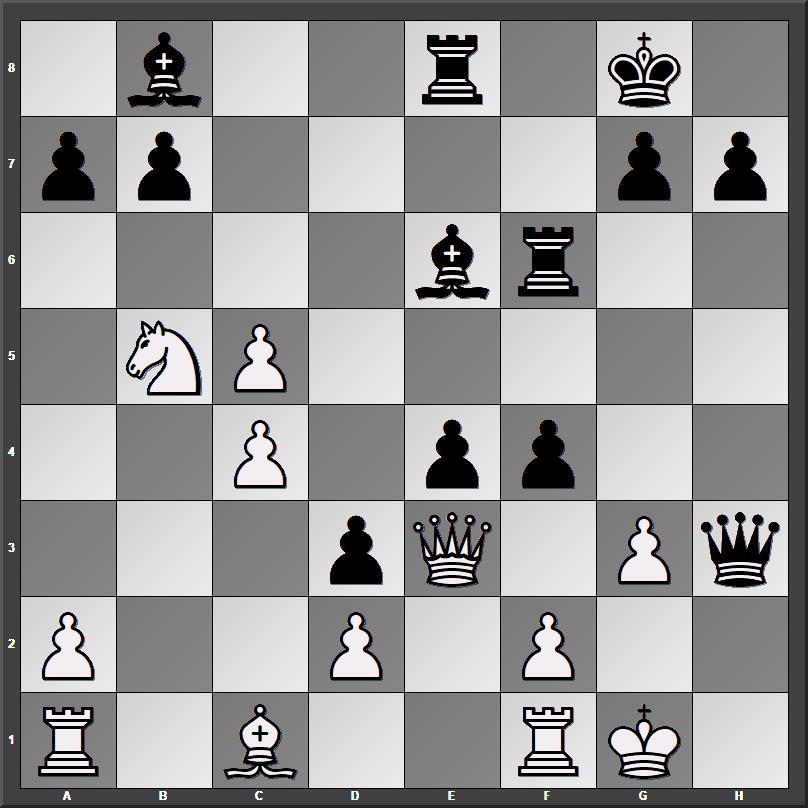 26.Qe1 [Now Black has mate in two, but if 26.gxf4 Rg6+ 27.Qg3 Bxf4 and then Black would have mate in three.] 26...Rh6 27.f3 Qh2# 01 White is checkmated
26.Qe1 [Now Black has mate in two, but if 26.gxf4 Rg6+ 27.Qg3 Bxf4 and then Black would have mate in three.] 26...Rh6 27.f3 Qh2# 01 White is checkmated
Game 3 [2.c4 Nc6 3.Nf3 d6]
Guest Sawyer, Chess.com, 25.03.2022
1.e4 c5 2.c4 e6 3.Nf3 d6 [My finger slipped while trying to play 3...d5.] 4.d4 cxd4 5.Qxd4 Nc6 6.Qd3 Nf6 7.Nc3 Be7 8.Bg5 a6 [White sets up a Maroczy Bind structure.]

9.Bxf6 Bxf6 10.000 Be7 Another continuation for Black is 10...00 11.Qxd6 Qa5 12.e5 Rd8 13.Qa3 Rxd1+ 14.Kxd1 Qxa3 15.bxa3 Nxe5. 13.h4 b6 14.g3 Bb7 15.Nd2 Rfd8 16.f4 Rac8 17.Nf3 Na5 Whites pawn on c4 is lost.
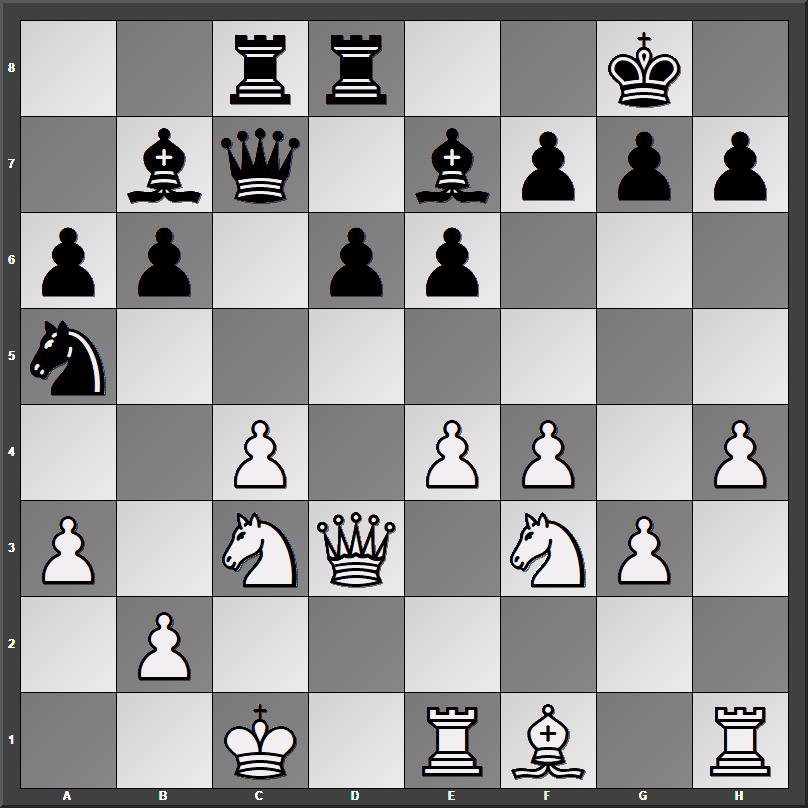

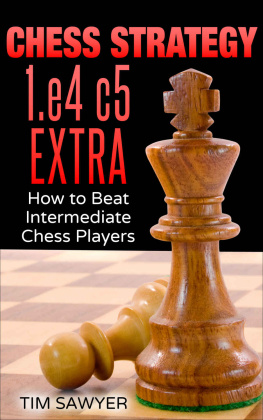
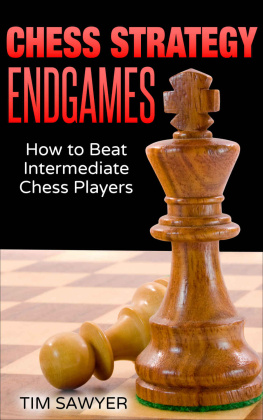

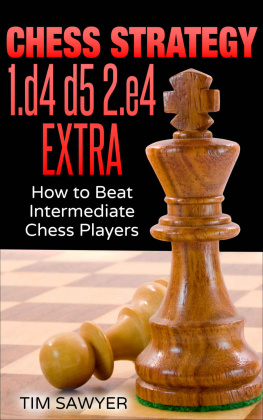

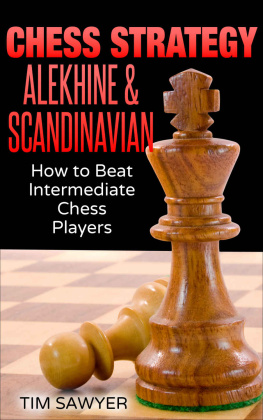
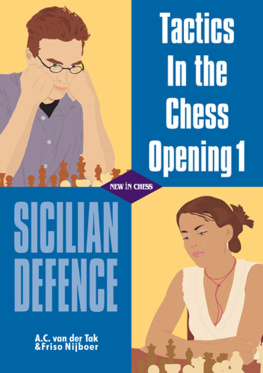
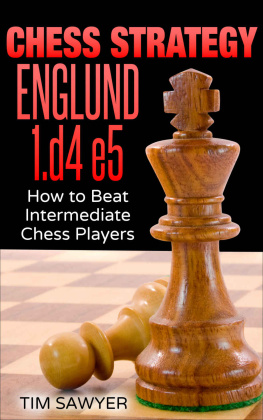
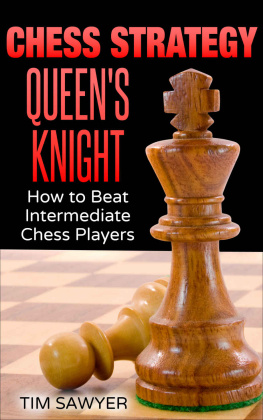
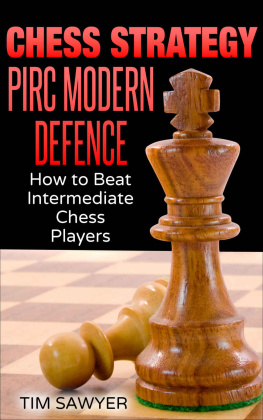
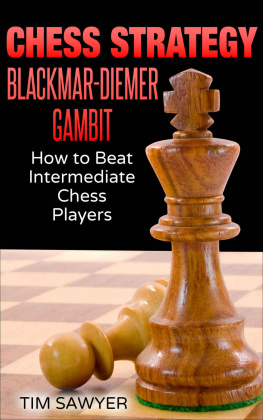

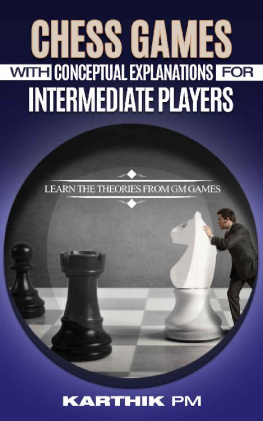
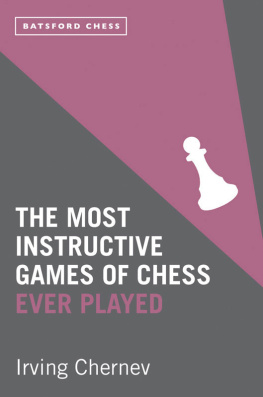
 7.Bb5 If 7.Bb3 c4 8.dxc4 Nxe4 9.Bxe7 Qa5+ Black wins a queen. 7...Qa5+ 8.c3 Or 8.Nc3 d4 and Black wins material. 8...Qxb5 9.Bc1 dxe4 10.Qxg7 Rg8 11.Qh6 exd3 12.Nd2 Bd7 13.c4 Qa5 14.Ngf3 Nd4 15.00 Nxf3+ 16.Nxf3 Bc6 [Rather than defend the threat against f3, White attacks my queen.] 17.Bd2 Bxf3 [My opponent can have the queen.]
7.Bb5 If 7.Bb3 c4 8.dxc4 Nxe4 9.Bxe7 Qa5+ Black wins a queen. 7...Qa5+ 8.c3 Or 8.Nc3 d4 and Black wins material. 8...Qxb5 9.Bc1 dxe4 10.Qxg7 Rg8 11.Qh6 exd3 12.Nd2 Bd7 13.c4 Qa5 14.Ngf3 Nd4 15.00 Nxf3+ 16.Nxf3 Bc6 [Rather than defend the threat against f3, White attacks my queen.] 17.Bd2 Bxf3 [My opponent can have the queen.]  18.Bxa5 Rxg2+ 19.Kh1 Rg3# 01 White is checkmated
18.Bxa5 Rxg2+ 19.Kh1 Rg3# 01 White is checkmated  I plan a big pawn center. White's d2 pawn never moves. 8.Qe5 Nc6 9.Qe2 Be7 10.Nf3 00 11.Ne5 [White moves a knight a second time to trade it away.] 11...Nxe5 12.Qxe5 Bd6 13.Qe2 e5 14.Be4 Nxe4 15.Qxe4 Qe7 16.00 f5 17.Qe1 e4 [My pawns dominate the center.] 18.Na3 Be6 19.Qe2 Qh4 20.h3 Rae8 [Black is fully developed and ready to assault the kingside.] 21.Nb5 Bb8 22.g3 Qxh3 23.b4 Rf6 24.bxc5 d3 25.Qe3 f4
I plan a big pawn center. White's d2 pawn never moves. 8.Qe5 Nc6 9.Qe2 Be7 10.Nf3 00 11.Ne5 [White moves a knight a second time to trade it away.] 11...Nxe5 12.Qxe5 Bd6 13.Qe2 e5 14.Be4 Nxe4 15.Qxe4 Qe7 16.00 f5 17.Qe1 e4 [My pawns dominate the center.] 18.Na3 Be6 19.Qe2 Qh4 20.h3 Rae8 [Black is fully developed and ready to assault the kingside.] 21.Nb5 Bb8 22.g3 Qxh3 23.b4 Rf6 24.bxc5 d3 25.Qe3 f4  26.Qe1 [Now Black has mate in two, but if 26.gxf4 Rg6+ 27.Qg3 Bxf4 and then Black would have mate in three.] 26...Rh6 27.f3 Qh2# 01 White is checkmated
26.Qe1 [Now Black has mate in two, but if 26.gxf4 Rg6+ 27.Qg3 Bxf4 and then Black would have mate in three.] 26...Rh6 27.f3 Qh2# 01 White is checkmated 9.Bxf6 Bxf6 10.000 Be7 Another continuation for Black is 10...00 11.Qxd6 Qa5 12.e5 Rd8 13.Qa3 Rxd1+ 14.Kxd1 Qxa3 15.bxa3 Nxe5. 13.h4 b6 14.g3 Bb7 15.Nd2 Rfd8 16.f4 Rac8 17.Nf3 Na5 Whites pawn on c4 is lost.
9.Bxf6 Bxf6 10.000 Be7 Another continuation for Black is 10...00 11.Qxd6 Qa5 12.e5 Rd8 13.Qa3 Rxd1+ 14.Kxd1 Qxa3 15.bxa3 Nxe5. 13.h4 b6 14.g3 Bb7 15.Nd2 Rfd8 16.f4 Rac8 17.Nf3 Na5 Whites pawn on c4 is lost. 